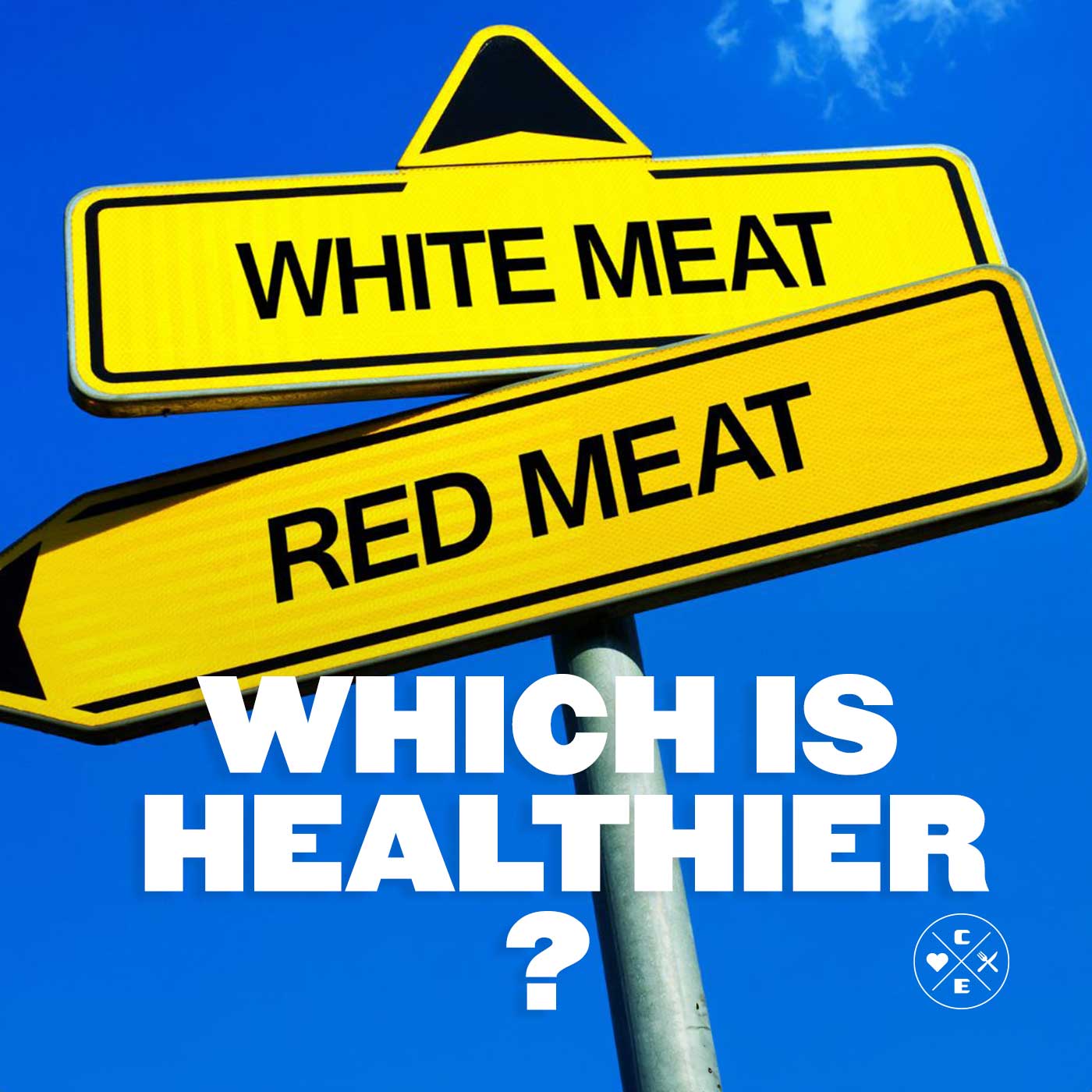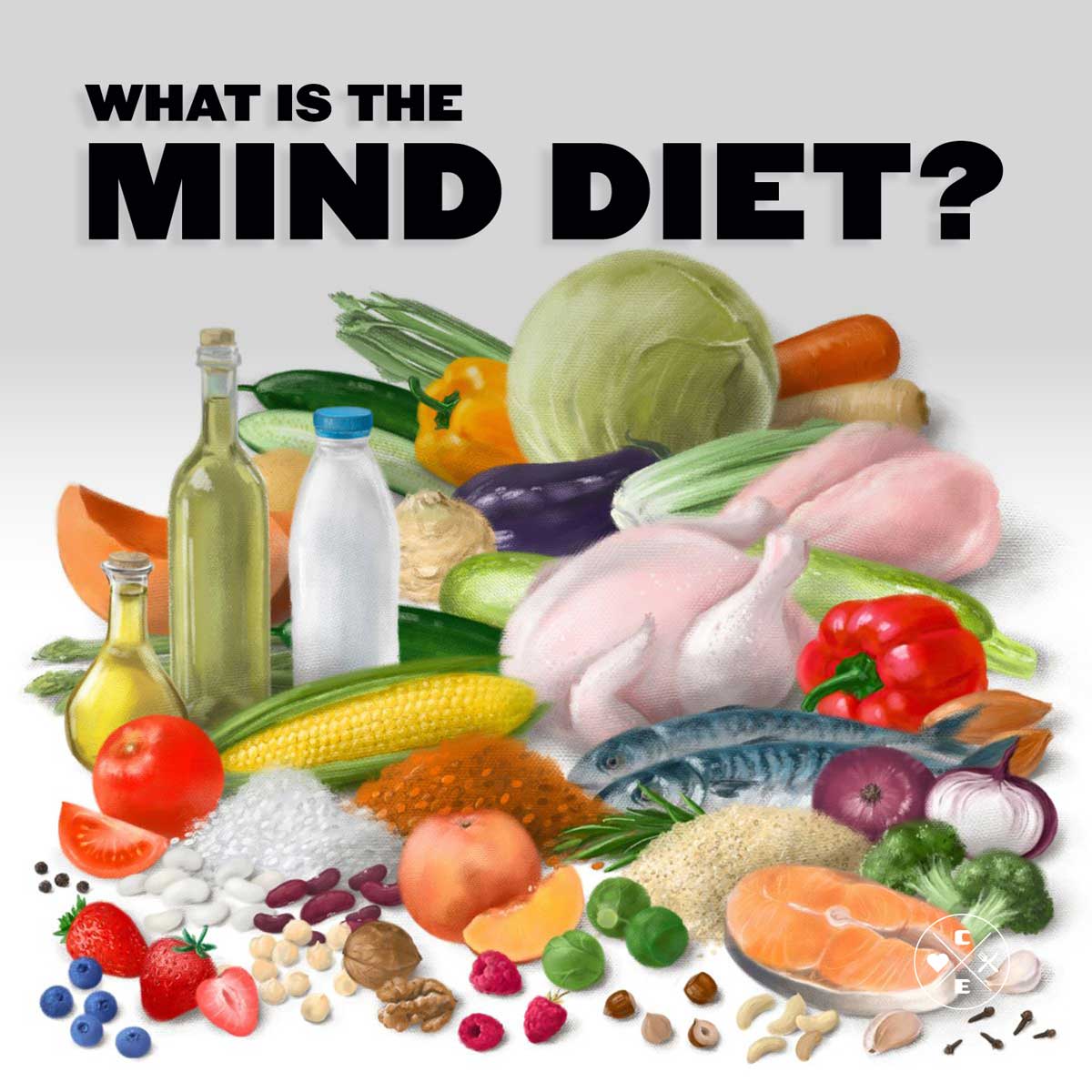
Which is Healthier, White Meat or Red Meat?
Dorothy M. Shirnyl, RND
Nutrition
|
Healthy Recipes
|
Weight Loss
13 minute read
White meat versus red meat: It's a dietary debate that has been simmering for years. While many health-conscious individuals have long favored chicken and turkey over beef and pork, recent research suggests that the nutritional differences between these two protein sources might not be as stark as previously thought.
In this blog post, we'll take an unbiased look at the latest scientific findings regarding white and red meat. We'll explore their respective nutritional profiles, potential health benefits, and any associated risks. By examining the evidence from both sides, we aim to provide you with a comprehensive understanding of how these meats can fit into a balanced and healthy diet.
Here, we will cover the following:
- What are White Meat and Red Meat?
- Nutritional Profiles of Both Types of Meat
- Health Benefits of White Meat and Red Meat
- Health Risks Associated with White Meat and Red Meat
- Environmental and Ethical Considerations
What are White Meat and Red Meat?
When it comes to meat, not all cuts are created equal. White meat and red meat, while both valuable sources of protein, have distinct characteristics that set them apart in terms of origin, appearance, and cooking methods. Understanding these differences can help you make informed choices for your meals and nutritious culinary adventures.
White Meat
White meat, often gracing our tables as chicken, turkey, or fish, stands out for its light color and tender texture. This protein powerhouse comes primarily from birds and fish, boasting a lower fat content due to reduced levels of myoglobin, the pigment responsible for the red hue in other meats. Popular for its versatility in various cuisines, white meat shines in dishes that emphasize its delicate nature, such as baked or poached preparations.
Red Meat
Red meat, a staple in many cultures, derives from mammals like cows, pigs, and lambs. Its deep red color, courtesy of abundant myoglobin, hints at its rich flavor and higher iron content. Whether it's a juicy steak, a hearty pork chop, or succulent lamb roast, red meat offers a robust culinary experience. With a wider range of cuts available, from lean to fatty, red meat lends itself well to grilling, roasting, and even slow-cooking methods that tenderize its textures and unlock deeper flavors.
Nutritional Profiles of Both Types of Meat
When it comes to nutrition, white and red meat each offer their own set of benefits:
White Meat
Known for being a lean protein source, white meat is generally lower in saturated fat and calories compared to red meat. It is an excellent source of essential nutrients like niacin, vitamin B6, and vitamin B12, which play vital roles in energy production, brain function, and red blood cell formation. Additionally, fish, considered a white meat, provides heart-healthy omega-3 fatty acids.
Red Meat
While often associated with higher fat content, red meat provides a wealth of essential nutrients. It is a particularly good source of iron, zinc, and vitamin B12, which are crucial for oxygen transport, immune function, and nerve health.
Health Benefits of White Meat and Red Meat
Beyond their culinary appeal, both white and red meat offer a wealth of nutrients essential for our well-being. However, the specific nutritional profiles of each type differ, influencing their impact on our health. Let's dive into the key nutrients provided by white and red meat, and how they contribute to our overall health.
White Meat
- Excellent source of high-quality protein. White meat, particularly poultry and fish, provides all the essential amino acids necessary for muscle growth, repair, and overall bodily functions.
- Lower in saturated fat. Compared to red meat, white meat typically contains less saturated fat, which can contribute to elevated cholesterol levels and heart disease risk.
- Rich in essential vitamins and minerals. White meat offers a variety of nutrients, including:
- Niacin (vitamin B3). Supports energy production, skin health, and nervous system function.
- Vitamin B6. Plays a role in brain development, immune function, and red blood cell production.
- Vitamin B12. Essential for nerve function, DNA synthesis, and red blood cell formation.
- Selenium. An antioxidant that helps protect cells from damage.
- Phosphorus. Important for bone health, energy production, and cell growth.
- Omega-3 fatty acids (in fish). These healthy fats promote heart health, reduce inflammation, and support brain function.
Red Meat
Red meat stands out for its nutritional value, packing a punch with essential vitamins and minerals:
- Rich in Iron. Red meat is a prime source of iron, a key component of hemoglobin responsible for carrying oxygen throughout the body. Sufficient iron intake is vital for preventing iron-deficiency anemia, characterized by fatigue and weakness.
- Abundant Zinc. Zinc plays a crucial role in immune function, wound healing, and DNA synthesis, all of which are supported by red meat consumption.
- Essential Vitamin B12. Red meat is a reliable source of vitamin B12, necessary for nerve function, red blood cell formation, and DNA synthesis. Vitamin B12 deficiency can lead to neurological issues and anemia.
Beyond these essential nutrients, red meat also offers unique benefits for muscle health:
- Creatine. Naturally found in red meat, creatine is involved in energy production during high-intensity exercise. Studies have shown that creatine supplementation can enhance muscle strength, power, and size.
- Carnosine. Red meat also provides carnosine, an antioxidant that helps shield muscle cells from damage and may improve exercise performance.
These combined nutritional advantages make red meat a valuable addition to a well-rounded diet, especially for individuals with increased protein needs or those focused on supporting muscle health.
Health Risks Associated with White Meat and Red Meat
Beyond their nutritional contributions, both white and red meat raise important health considerations that deserve attention. Understanding the potential drawbacks associated with each type of meat can empower us to make informed choices that promote overall well-being.
Potential Health Risks Associated with White Meat
While white meat offers various health benefits, it's important to be aware of potential risks that may arise from its consumption. These risks are primarily associated with modern farming practices and the processing of white meat products.
Antibiotic Use and Resistance
One significant concern is the widespread use of antibiotics in poultry farming. Antibiotics are often administered to promote growth and prevent disease in crowded poultry farms.
However, this practice contributes to the development of antibiotic-resistant bacteria, posing a threat to human health. When we consume meat contaminated with these resistant bacteria, infections become harder to treat, as common antibiotics may be ineffective.
Cholesterol Levels and Heart Health
Contrary to popular belief, recent research suggests that white meat, especially when consumed in large amounts, may not be as heart-healthy as previously thought. A study found that both white and red meat can raise LDL ("bad") cholesterol levels, potentially increasing the risk of heart disease.
Processed White Meat
Processed forms of white meat, such as chicken nuggets, sausages, and deli meats, often contain high levels of sodium, unhealthy fats, and various additives. Regular consumption of these processed products has been linked to an increased risk of high blood pressure, heart disease, and certain types of cancer.
Other Concerns
- Contamination. White meat, particularly poultry, can be contaminated with harmful bacteria like Salmonella and Campylobacter, which can cause foodborne illnesses. Proper handling and cooking of white meat are essential to minimize this risk.
- Hormones. Some poultry farms may use growth hormones to accelerate the growth of chickens and turkeys. While the impact of these hormones on human health remains a topic of debate, some individuals prefer to opt for hormone-free options.
It's important to note that these risks can be mitigated by choosing organic or antibiotic-free white meat, prioritizing fresh over processed options, and practicing safe food handling and cooking techniques.
Potential Health Risks Associated with Red Meat
While red meat boasts nutritional merits, it's crucial to acknowledge and understand its potential health risks, primarily linked to saturated fat content, potential carcinogens, and inflammatory responses.
Saturated Fats and Heart Health
Red meat, especially fatty cuts like ribs and certain steaks, contains high levels of saturated fats. These fats can raise LDL ("bad") cholesterol levels in the blood, increasing the risk of atherosclerosis – the buildup of plaque in arteries. This buildup can narrow arteries, restrict blood flow, and potentially lead to heart attacks and strokes. Choosing leaner cuts of red meat and limiting portion sizes can help mitigate this risk.
Carcinogenic Compounds and Cancer Risk
Research suggests a potential link between red meat consumption and an increased risk of certain cancers, particularly colorectal cancer. The cooking process, especially at high temperatures (grilling, frying), can produce heterocyclic amines (HCAs) and polycyclic aromatic hydrocarbons (PAHs), which are classified as probable carcinogens. Processed red meats like bacon, sausage, and hot dogs pose a higher risk due to added nitrites and nitrates, which can transform into carcinogenic nitrosamines. Limiting red meat intake, varying cooking methods, and incorporating plenty of fruits and vegetables into your diet can help reduce this risk.
Inflammatory Response
Red meat consumption has been associated with increased levels of inflammation in the body. Chronic inflammation is a risk factor for a range of health conditions, including heart disease, type 2 diabetes, and some types of cancer.
Components in red meat, such as saturated fat and heme iron (a type of iron found in animal products), have been implicated in triggering inflammatory pathways. Opting for leaner cuts, consuming red meat in moderation, and balancing it with anti-inflammatory foods like fruits, vegetables, and whole grains can help manage this risk.
Additional Considerations
It's important to note that not all red meat is created equal. Grass-fed beef, for instance, may have a different fatty acid profile compared to grain-fed beef, potentially offering some health advantages. Moreover, individual responses to red meat can vary. Some individuals may experience more pronounced negative effects than others.
Environmental and Ethical Considerations
The environmental and ethical implications of meat consumption extend beyond personal health considerations. The production of both white and red meat has far-reaching consequences for the planet and animal welfare. It's essential to delve into these impacts to make informed choices as conscious consumers.
Environmental Impact
Both white and red meat production contribute to environmental challenges, but the extent and nature of their impact differ.
White Meat (Poultry & Fish)
- Feed Production. A major environmental concern associated with poultry production is the cultivation of feed crops, primarily soy and corn. This often involves deforestation, extensive pesticide use, and water pollution from runoff.
- Water Usage. While generally requiring less water than cattle, large-scale poultry farms still consume significant amounts for drinking, cleaning, and waste disposal. This can strain local water resources and contribute to pollution.
- Antibiotic Use. The widespread use of antibiotics in poultry farming to prevent disease and promote growth contributes to the growing problem of antibiotic resistance, posing risks to human health.
- Fish Farming. Aquaculture, while potentially more sustainable than some fishing practices, can lead to water pollution from fish waste, the spread of diseases to wild fish populations, and habitat destruction.
Red Meat
- Land Use. Red meat production, especially beef, requires vast tracts of land for grazing and feed crop cultivation. This leads to deforestation, habitat destruction, and biodiversity loss.
- Greenhouse Gas Emissions. Cattle are significant emitters of methane, a potent greenhouse gas with a warming potential much higher than carbon dioxide. This contributes substantially to climate change.
- Water Consumption. Red meat production is incredibly water-intensive. It takes significantly more water to produce a calorie of beef than a calorie of plant-based protein.
- Manure Management. The massive amounts of manure produced by cattle can pollute waterways with excess nutrients if not managed properly. This can lead to algal blooms, oxygen depletion, and harm to aquatic life.
Ethical Concerns
Behind the sizzling steaks and crispy chicken wings lie ethical questions that extend far beyond our dinner plates. The meat industry, while providing sustenance for many, grapples with complex issues concerning the well-being of animals and the sustainability of our planet.
A Question of Welfare
Imagine spending your life confined to a cramped space, unable to roam freely or engage in natural behaviors. This is the reality for billions of animals raised in factory farms, where efficiency often takes precedence over animal welfare. From chickens crammed into overcrowded barns to pigs confined to gestation crates, these practices raise concerns about the physical and psychological well-being of animals raised for food.
The journey from farm to fork also involves the slaughter process, a topic fraught with ethical debate. While efforts have been made to develop more humane slaughter methods, concerns remain about the potential for pain and suffering experienced by animals during this final stage of life.
The Sustainability Challenge
As the global population continues to grow, so does the demand for meat. This demand strains our planet's resources, as meat production requires vast amounts of land, water, and feed. The environmental impact of clearing forests for grazing and cultivating feed crops is undeniable, contributing to deforestation, habitat loss, and biodiversity decline.
Furthermore, the carbon footprint of meat production, particularly red meat, is substantial, with methane emissions from livestock playing a significant role in climate change. This raises ethical questions about the sustainability of our current meat consumption patterns and the need to consider alternative, less resource-intensive protein sources.
The ethical dimensions of meat production are complex and multifaceted. As consumers, we hold the power to influence the industry through our choices. By being mindful of animal welfare and sustainability concerns, we can make informed decisions that align with our values and contribute to a more ethical and sustainable food system.
Conclusion
In the end, both white and red meat can contribute to a healthy diet. White meat, with its lean profile and abundance of vitamins, is a versatile choice for those seeking lighter options. Red meat, packed with iron and zinc, offers its own unique nutritional advantages, particularly for supporting muscle health.
The key lies in balance, moderation, and informed choices. By understanding the nuances of both types of meat, you can make decisions that align with your health goals and preferences. Whether you're grilling a lean chicken breast, savoring a juicy steak, or exploring plant-based alternatives, the journey towards a healthy lifestyle is paved with mindful choices and a diverse palate.
White, Red, or Both? Build Your Meal Plan with Clean Eatz Kitchen!
Want the best of both worlds? At Clean Eatz Kitchen, we offer delicious and nutritious meals featuring both lean white and red meats, carefully sourced and prepared to maximize their health benefits. Fuel your body with a variety of protein options and discover the perfect balance for your lifestyle.
Ready to get started? Build your personalized meal plan today and experience the difference that a balanced and flavorful diet can make!
References
Giromini, Carlotta, and D. Ian Givens. “Benefits and Risks Associated with Meat Consumption during Key Life Processes and in Relation to the Risk of Chronic Diseases.” Foods, vol. 11, no. 14, 1 Jan. 2022, p. 2063, www.mdpi.com/2304-8158/11/14/2063, https://doi.org/10.3390/foods11142063.
Lupoli, Roberta, et al. “White Meat Consumption, All-Cause Mortality, and Cardiovascular Events: A Meta-Analysis of Prospective Cohort Studies.” Nutrients, vol. 13, no. 2, 1 Feb. 2021, p. 676, www.mdpi.com/2072-6643/13/2/676, https://doi.org/10.3390/nu13020676.
Manyi-Loh, Christy, et al. “Antibiotic Use in Agriculture and Its Consequential Resistance in Environmental Sources: Potential Public Health Implications.” Molecules, vol. 23, no. 4, 30 Mar. 2018, p. 795, www.ncbi.nlm.nih.gov/pmc/articles/PMC6017557/, https://doi.org/10.3390/molecules23040795.
“Meat in Your Diet.” Nhs.uk, 23 Feb. 2022, www.nhs.uk/live-well/eat-well/food-types/meat-nutrition/#:~:text=Red%20meat%20provides%20us%20with.
“Study: Red and White Meat Might Have Equal Effects on Blood Cholesterol | NHLBI, NIH.” Www.nhlbi.nih.gov, www.nhlbi.nih.gov/news/2019/study-red-and-white-meat-might-have-equal-effects-blood-cholesterol.
Related Articles
Healthy Desserts for Weight Loss: Indulge Without Guilt
15 minute read
The MIND Diet: Your Guide to Better Brain Health at Any Age
17 minute read



